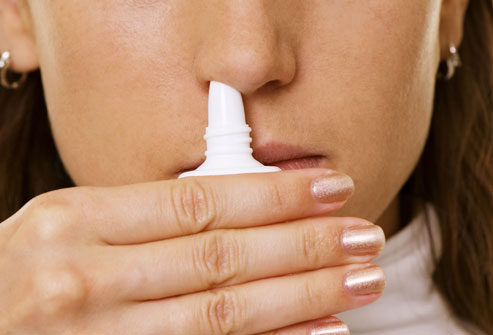A preclinical feasibility study has shown that epinephrine delivered nasally (without needles) was absorbed into the bloodstream with similar effectiveness as epinephrine delivered traditionally via auto-injector, according to a press release by partner pharmaceutical companies.
Shin Nippon Biomedical Laboratories, Ltd of Japan and G2B Pharma Inc of San Francisco have cleared the way to begin clinical trials in 2014 of a new system for administering emergency epinephrine in cases of suspected anaphylaxis. The system is comprised of a novel nasal delivery system as well as a proprietary epinephrine formulation.
Though FDA approval is still years away, an alternate means of delivering epinephrine that does not involve needles would be welcome. Epinephrine is often administered too late in spite of the fact that the drug carries little risk of side effects because parents are afraid to “stab” their children with an auto-injector. A means of delivering epinephrine painlessly may allay fears of administering the drug at the first sign of anaphylactic symptoms.







None of my allergic patients or parents of allergic children have expressed they would hesitate to use an epinephrine auto-injector when indicated. I get a lot of referrals, and see many patients that were previously treated elsewhere for their asthma and/or allergies. I always have to spend considerably more time demonstrating proper technique for nasal sprays than auto-injectors. Additionally, prior to using any nasally delivered medication, the patient, needs to blow their nose. This may prove difficult for a child or adult in anaphylaxis.
They probably don’t tell you that they would hesitate to use the auto-injector because you are their doctor and they know that is the wrong answer. As the parent of a son who has had many, many occasions where I’m sure we should have used the auto-injector, and only one occasion where we did (which was extremely traumatic for both us and our son), I can tell you that have a nasal delivery rather than needle delivery would make a big difference in comfort level for us and for my son’s other caretakers.
As an adult who just developed multiple allergies in January of this year, I have hesitated to give myself epinephrine on several occasions. My husband has also been nervous and delayed administering it, opting for a wait and see approach after taking Benedryl and puffers. This could have been life threatening. Two days ago, when a reaction showed no sign of response, he gave me the injection. It didn’t hurt nearly as much as I expected. In future, we will not hesitate to use it right away. But I can definitely see the upside to having a non-needle option.
Dear Lisa,
Ask whoever gave you the autoinjector to demonstrate it again, and address your concerns. They should have a demonstration model for you and your husband to enable you both to practice. There can be no hesitancy on your part when you need it, and call 911. Your severe allergic reaction still needs treatment in an emergency room.
Dear Heather,
I encourage discussion with my patients, and before their first visit is over, they all know I want them to tell me if they have any concerns. I want you to be aware that my patients know, there is no “wrong answer.” If this is how you feel, talk it over with your doctor. Doctors want to help. So ask for help.
Please go back to your child’s allergist and talk about your issues. Tell them about these specific instances when you suspected your son was having a severe life threatening allergic reaction, and how it was treated. Discuss why the the auto-injector was extremely traumatic for your son and you. Most kits have a demonstration model, with no needle so you can practice. I have parents inject into the outside of the thigh, THROUGH their child’s pants. Ask your allergist to show you and your husband how to use it, and practice. Call 911. In anaphylaxis, the auto-injector is only a temporary measure.
I was definitely hesitant to use my autoinjector the first time. I had heard too many horror stories about how much it hurts. Once you do it the first time, it isn’t scary, but the needle can be a source of anxiety, especially in kids.
My concern about a nasal inhalor is its effectiveness if the patient’s airways have closed enough that they can’t inhale the spray. It also seems like it would take longer to get the inhalor, shake it, and spray it in each side.
In a prehospital setting it would seem far quicker than drawing up epi from a glass ampule and injecting IM. Giving epinephrine 1:1000 IN could save time in a severe allergic reaction. And having seen naloxone work almost just as well via nasal atomizer as it does IV I feel confident in saying the patient does not have to blow their nose, BUT that’s just my humble opinion as I’m definitely no doctor.